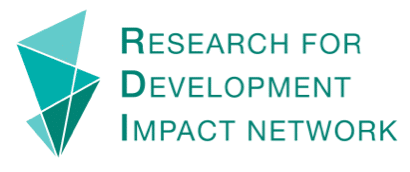Disability inclusive development addresses the socioeconomic inequality of people with disabilities and ensures their participation in development programs on an equal basis with others. This involves including disability in development policies, processes and analysis. It works to improve equity and development effectiveness.
Including people with disabilities in development, requires inclusive development organizations. This involves creating inclusive and respectful workplaces, and addressing employment barriers to disability inclusion among other things. Organizational assessment tools can help development organisations track and improve how well they are engaging with disability inclusion.
For example, the World Bank’s Disability Inclusion and Accountability Framework, outlines steps to mainstreaming disability inclusion in their work. It includes recognizing persons with disabilities among the beneficiaries of their project, carrying out projects to address gaps to their inclusion, building staff capacity on disability inclusion, and partnerships for implementing the disability inclusion agenda.
Disability inclusion applies to communications in all its forms and aspects. As well as website, social media, video, and content accessibility, it also involves inclusive language, disability etiquette and ethical consideration about creating and publishing content. The Australian Disability and Development Consortium provides a list of guides, toolkits and resources on these and other aspects of inclusive communications.
Development organisations need to be mindful about ensuring that virtual meetings, webcasts and all other digital products are accessible for people with disabilities. The Internet Society provides a useful checklist for hosting accessible online meetings. Improving web content accessibility includes providing text captioning and sign language. It also involves writing and presenting the content itself so that it is easier to understand for screen readers.
Disability inclusion in development also necessitates accessible and inclusive conferences and meetings. This involves incorporating these considerations into planning, delivery and follow up stages. This CBM Global Disability Inclusion Toolkit provides practical guidance including preparing communications and materials, meeting venues, hotels, transportation, programs and presenters.
The DID4All website provides Australian-based organisations with resources and technical assistance on disability inclusive development. These are aimed at assisting development stakeholders to design, implement, monitor and evaluate programs in a way that is inclusive of people with disabilities.
The Source International Online Resource Centre on Disability and Inclusion also provides a searchable database with key resources on health, functional rehabilitation, education and livelihoods. However, more data is needed to support disability inclusive development and attention needs to be given to how data on disability can be collected and used within programs. This practice note on Collecting and using data on disability to inform inclusive development, discusses making data collection processes disability inclusive, and methods and tools for collecting data to support disability inclusion.
Quick checklists:
- Are Your Virtual Meetings Accessible for People with Disabilities? Start with This Checklist (5 mins, blog post)
- Accessible meetings and events: a toolkit (1 hour, Doc)
- Standards for Writing Accessibly (10 mins, excerpt)
- Inclusive Communications Resources (5 mins, list)
- Organisational Inclusion (5 mins, list)
Read the full articles:
- Disability inclusion and accountability framework (1 hour, PDF 7.58 MB)
- Source: International Online Resource Centre on Disability and Inclusion (database)
- DID4All: Resources for Disability Inclusive Development (website)



